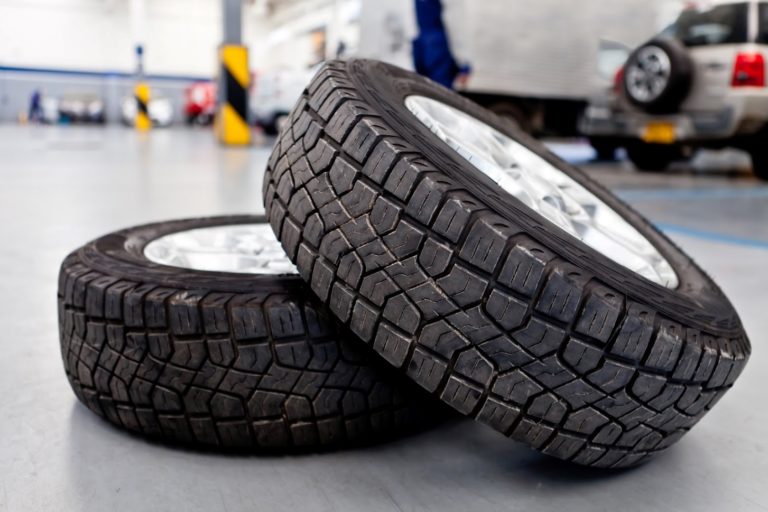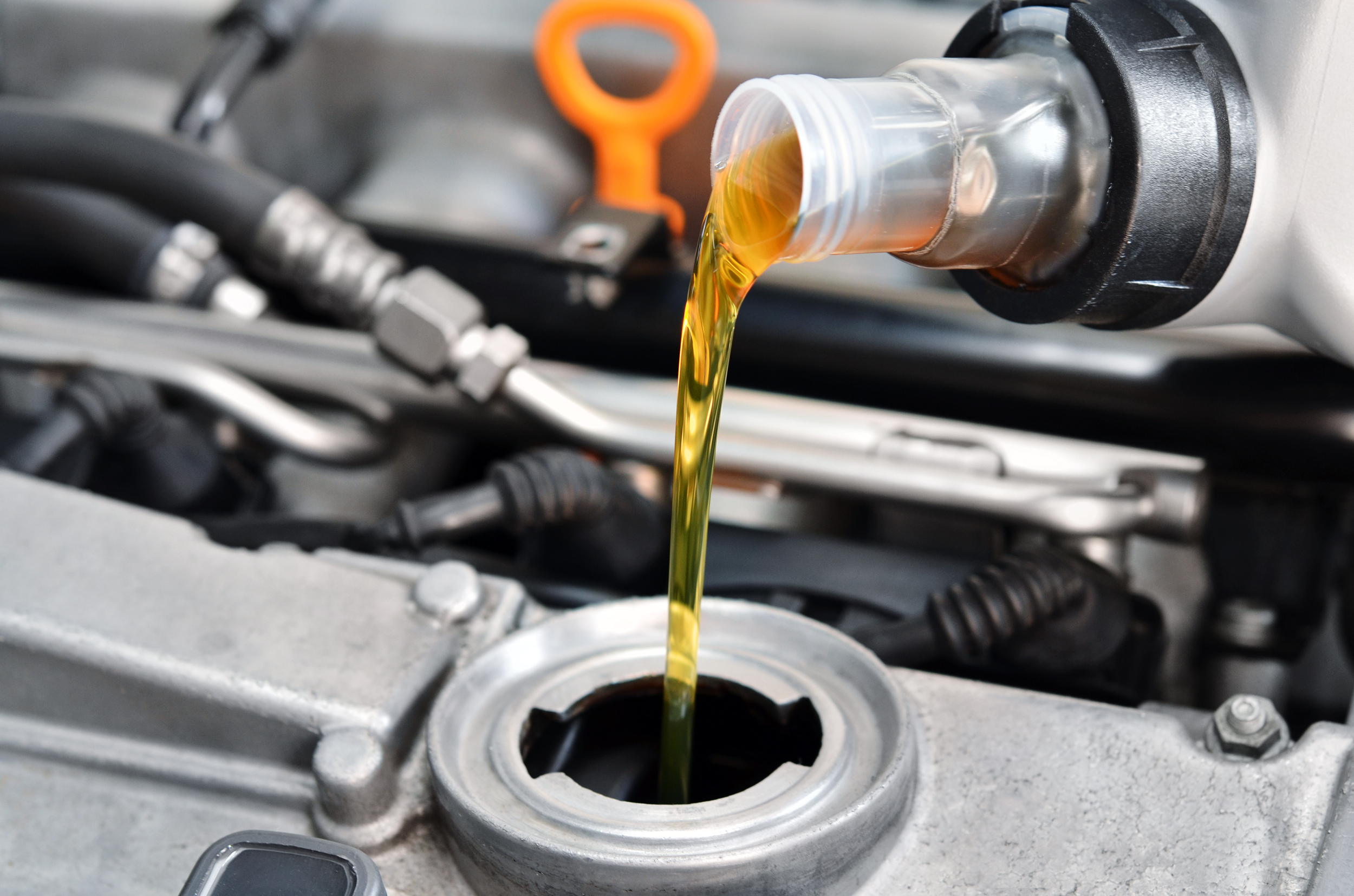Tires rotate all the time as they roll down the road, but that’s not what it means to «rotate» your tires. Rotating your tires means to move each tire from its original wheel position to another, moving them left to right, back to front, or even diagonally, for the purpose of promoting even tire wear.
Why should your vehicle’s tires be rotated? Simple: Tires tend to wear unevenly. The front tires tend to wear on the outside edges because the tire leans when you turn a corner. The rear tires follow the front tires instead of moving independently, so they usually wear more evenly. Failing to rotate your tires means the outside edges on the vehicle’s front tires will wear down much faster than the rear tires, causing them to need replacement thousands of miles sooner than average, and will contribute to your tires needing to be replaced individually or in pairs, rather than as a set. Each wheel position can cause different tire wear rates and different types of tire wear. Proper tire rotation allows each tire to serve in as many of the vehicle’s wheel positions as possible, thereby promoting even wear on all four tires, prolonging the life of your tires, and evening out their lifespans.

The usual recommendation for tire rotation is every 3,000 — 6,000 miles. However, the need for rotation will differ among tire manufacturers, vehicle makes, and driving habits.
A vehicle’s weight is distributed differently to the front and rear tires. Engines are most commonly placed in the front end of a vehicle; therefore, the front tires typically bear more weight than the rear tires. Braking and constant steering maneuvers place additional stress on the front tires as well. Tires on front-wheel drive vehicles carry the weight of the engine, as well as the additional weight of the transaxle, which increases the uneven weight. The tires of performance vehicles, vehicles designed and constructed specifically for speed, will also experience more severe tire wear.
Mechanical, suspension, and steering linkage problems may contribute to uneven tire wear. Wheels misaligned with each other and/or with the vehicle’s axis will tend to be dragged along by the other wheels, causing uneven wear in that tire. If the alignment is such that the vehicle tends to turn or pull while driving, the driver will correct for the pulling by steering against it, causing the vehicle to be in a constant state of turning which contributes to uneven tire wear.
The tire rotation pattern is typically to move the back wheels to the front, and the front wheels to the back, sometimes crossing them diagonally. If the tires are unidirectional, the rotation can only be rotated front to back on the same side of the vehicle to preserve the rotational direction of the tires.
If tire rotations have been neglected and two of the four tires are nearly worn out, the best tires should be kept at the rear wheel positions of the vehicle regardless of whether the vehicle is front or rear-wheel drive. The reason for this is if the rear wheels lose traction before the front ones, an oversteer condition will occur which is harder to control than the corresponding understeer which will happen if the front wheels lose traction. This is also true in the case of a tire blow out. Consequently, the intuitive belief that the front tires need to be the best quality is not the case. However, if front and rear tire tread depths are close to the same but a little bit different, the best tires should be rotated to the front to help even out the wear on all four tires.
A rear tire blow out will cause the vehicle to become difficult to control, especially if the blow out occurs at highway speeds. The risk of rollover is also increased due to yawing, a condition where the rear of the vehicle swings out and becomes perpendicular to the direction of travel. Yawing will cause the tire to separate from the rim, allowing the rim to dig into the pavement, dirt, or grass if the vehicle is no longer on the road, which will cause the vehicle to rollover.
Have your tires rotated during every 3,000 — 6,000 mile interval oil change. During the rotation, each tire should be inspected for damage. Any stones or debris should be removed from the tire treads. Steering and suspension components, as well as the tread depth of each tire should be inspected. And last but not least, the air pressure of each tire should be inspected and adjusted to optimal levels.
Using tire rotation correctly as a proactive and preventative maintenance measure will equalize front-to-rear and side-to-side wear rates while enhancing total wear quality. Any obvious differences in the wear rates of a vehicle’s front and rear tires is a sure sign that tire rotations should be done more frequently. When your tires wear evenly and wear out together, you will be able to purchase a set of four new tires without being forced to buy pairs, and proper rotation will extend the life of your tires which will save you time and money in the long run.
If you have any question about the condition of your tires, or about why and when they need to be rotated, have an ASE certified technician inspect the tires and components as described above and answer any questions you have.
Podobné články
All-Wheel Drive – Is This Option Best for You?
The past few years have seen an explosion in the number of vehicles offered with all-wheel drive.

Tires are more than just functional — they’re also one of your car’s major safety features. One of the most important things you can do for your vehicle is rotate its tires. Tire rotation is the process of moving your tires to different wheel positions to promote even tire wear.
The most straightforward rotation pattern involves moving the rear tires to the front and the front tires to the rear. Rotating your tires is an easy and cost-effective way to increase the life and efficiency of your tires.
Manufacturers have different tire rotation frequencies. However, the recommended interval for tire rotation is about 5,000 to 7,500 miles.
If you have put off your next tire rotation, below are 5 reasons you should rotate your tires regularly.
- Extended Life for Your Tires and Suspensions
Tires wear out unevenly for several reasons, including driver habits, temperature, and driving terrain.
Tires will naturally experience varying amounts of stress wherever they are on your vehicle. Front wheels will have an increased burden in a front-wheel-drive car because of the steering and driving. Because of this, the front tires will wear out faster than others.
By rotating the front and rear tires periodically, you essentially spread out the wear and tear. Tire rotation helps you avoid pattern wear, or damage from driving long distances in one direction.
Uneven tread wears results in vibrations that damage your suspension system. Rotating your tires regularly extends the lifespan of your tires and suspensions.
Worn-out tires cannot maintain proper contact with the road, resulting in increased friction. As such, the tires put a strain on your engine and increase your fuel consumption because your engine works extra hard to propel your vehicle.
Regular rotation reduces friction and the engine load on your vehicle, providing better traction and gas mileage.
Your tires are your point of contact with the road and contribute to how effectively your vehicle performs. When you skip tire rotation for too long, you compromise your vehicle’s safety and performance.
Neglecting tire rotation results in uneven tire wear, leading to tire misalignment and loss of balance. Unevenly worn tires don’t maintain uniform contact with the road, adversely impacting your handling. Uneven tires hamper your ability to make sudden stops and sharp turns, increasing the risk of an accident.
On the other hand, regular tire rotation translates to better braking performance and less noise and vibration. When your tires wear out evenly, you enjoy better car performance.
Scheduled tire rotation is an essential service vehicle manufacturers recommend. Most manufacturers require you to rotate your tires regularly to keep the contract valid for tires under warranty.
Warranty or not, tire rotation maintenance is in your best interest.
Regular tire rotations save you a great deal of money down the road. As mentioned, you will enjoy saving on gas. You might not have to purchase individual tires as often and reduce costly mechanical repairs.
Spending a small fee on regular tire rotation will save you the costs of putting your vehicle in danger of repairs and potential accidents.
Rotation is an inexpensive procedure that optimizes your vehicle’s overall performance. Given all the benefits of regular tire rotation, you must remember to schedule this maintenance at the right time. Make a habit of rotating your tires every time you have an oil change.
Nevertheless, you should get a tire rotation immediately if you notice uneven tire wear, loss of tire pressure, or vibration when driving at high speed.
If you have any questions about tires, please don’t hesitate to contact Evans Tire & Service Centers.

39.99 $ Výměna syntetického oleje
Ušetřete při příští výměně oleje
















